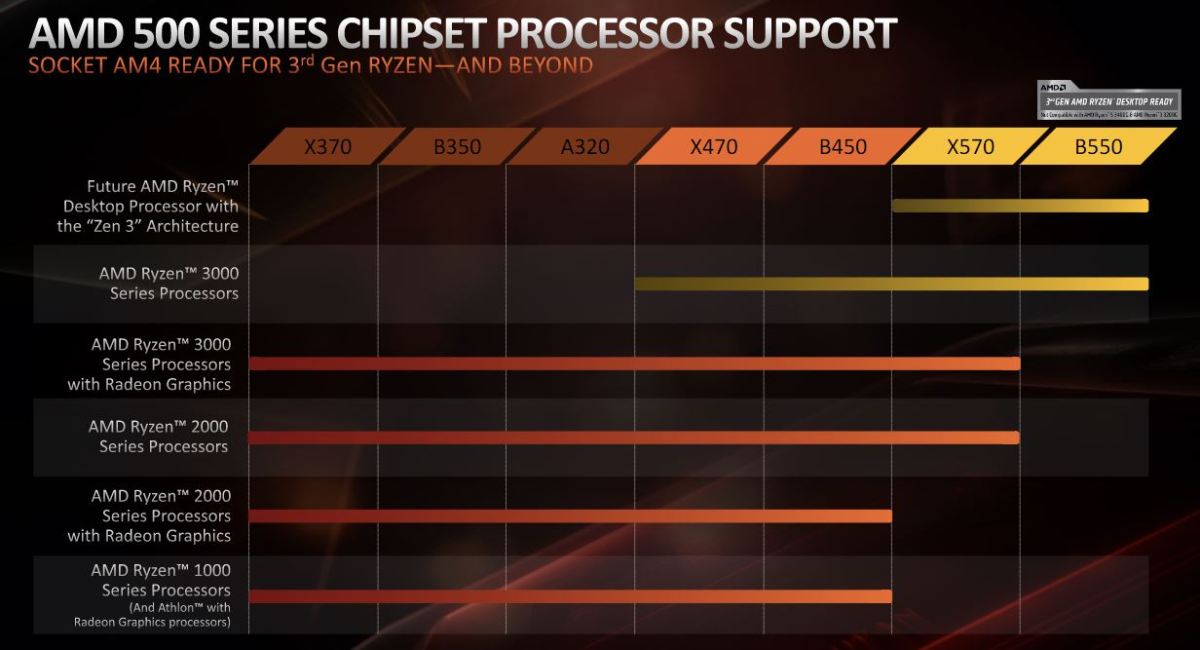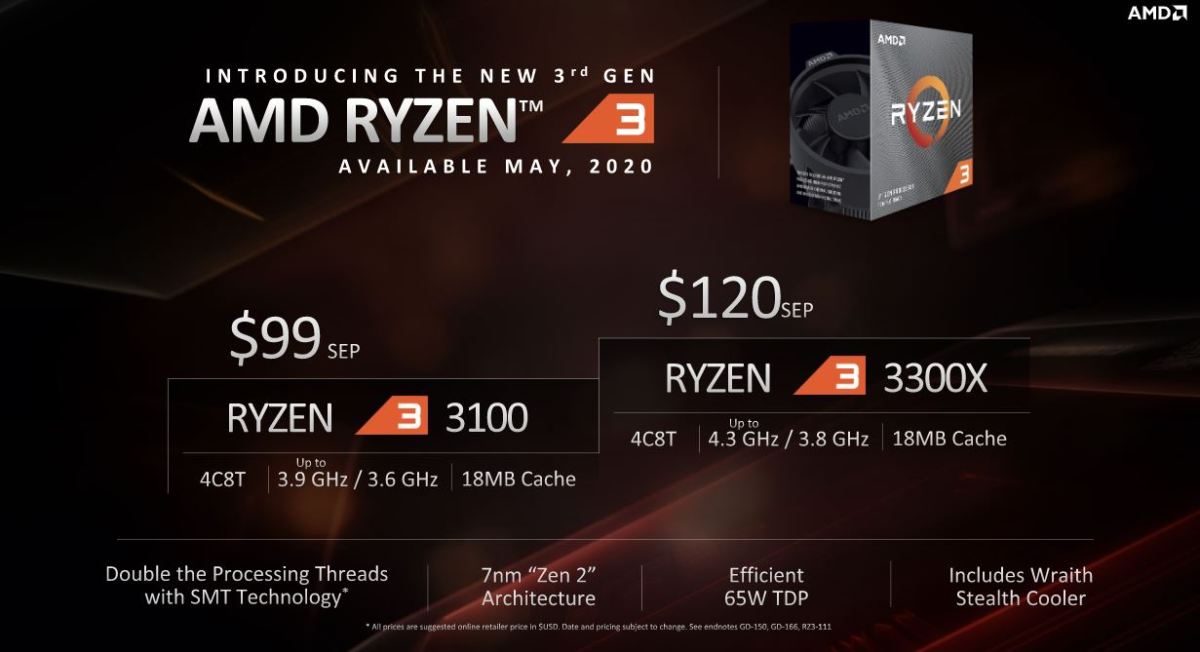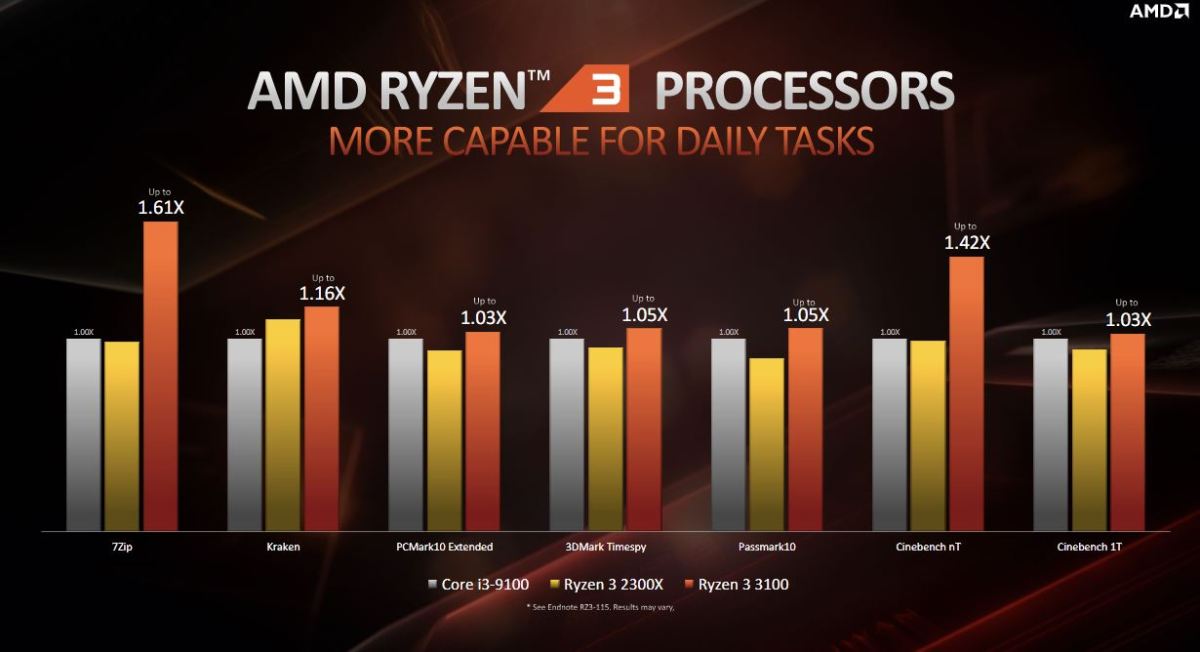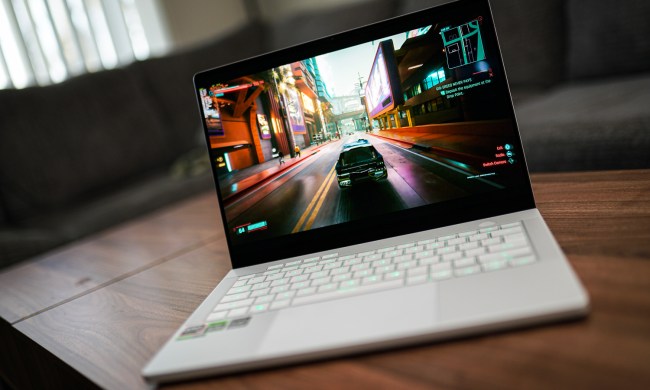AMD has a new motherboard chipset that marks a hard cutoff in support for older processors. B550, the follow-up to the B450, will not support previous generations of Ryzen processors — notably those that use Zen and Zen+ architecture.
AMD’s policy on backwards compatibility has been very public, with the company committing to motherboards with the AM4 sockets until 2020. This commitment has lasted nearly four years and encapsulates the first era of Ryzen.
But that time has come to an end. The first movement of AMD’s Ryzen symphony has concluded, and the B550 represents the beginning of a transition toward the future of Ryzen.
B550: Zen 2 and onward
B550, a new midrange motherboard chipset, supports third-generation Ryzen and beyond, but isn’t compatible with first- or second-generation Ryzen. An AMD representative explained the cutoff is aimed at making space for the wide variety of future processors the B550 will support. “The legacy burden is getting too large,” he said.
AMD confirmed that B550 would be compatible with Zen 3 processors and beyond, though the company didn’t state how many generations it would last for.

Following in the footsteps of the X570, the B550 moves up to 16 lanes of PCIe 4.0 for graphics cards and NVMe storage. The general purpose PCIe lanes have been moved from Gen 2 to Gen 3. The B550 moves up to USB 3.2 Gen 2 to double the maximum speed to 10Gbps.
The B550 now supports dual GPUs, a feature previously reserved for the X570, as well as overclocking. As always, that doesn’t mean every B550 motherboard will include overclocking capabilities, and the X570 will remain a far more robust overclocking platform.
The B550 takes the place of the B450, which launched in 2018, and should be set to launch on new motherboards starting June 16. AMD says it expects boards to start at $100, with more than 60 third-party motherboard designs in development.
Ryzen 3 3100 and Ryzen 3 3300X

To complement the new chipset, AMD has launched two new midrange Ryzen 3 processors, the Ryzen 3 3100 and Ryzen 3 3300X. These affordable quad-core processors were announced a few weeks ago and start at just $100. AMD has provided some more detail on just how powerful they are.
Judging from the specs alone, you might assume the 3300X is only a clocked-up 3100, but AMD says there’s a bigger difference under the hood. The 3300X features all four cores on a single CCX, rather than splitting the processing cores in separates clusters. AMD says this enables better cache utilization, resulting in lower core-to-core latency and better overall performance.
At the time of the announcement, the Ryzen 3 3100 sported one big advantage over its rival, Intel’s Core i3-9100. They’re both quad-core desktop chips, but the 3100 features AMD’s simultaneous multithreading for double the threads. AMD cites gains of up to 1.42x the performance over the Core i3-9100, across both gaming and content creation. AMD even boasted slightly higher single-core performance in Cinebench and PCMark.
Since AMD made these comparisons, Intel launched its own 10th-gen desktop chips, which now feature hyperthreading at the Core i3 level. That makes the Core i3-10100 and Ryzen 3 3100 equal in cores and threads.

AMD notes that the 3100 is a similar configuration to Intel’s old Core i7-7700K. That’s a $100 processor competing with a high-end $350 Intel chip from 2017, showing how far the technology has come in just a couple of years.
In other graphs, AMD pits its Ryzen 3 3300X against the Core i5-9400. Though the 3300X has just four cores, the simultaneous multithreading gives it more threads than the Core i5. The result is that it’s almost 10% ahead in some cases. Intel’s 10th-gen chips upset this advantage by also bringing hyperthreading to the Core i5-10400.
While Intel’s 10th-gen chips make the match with Ryzen a bit more equal, AMD’s selection is still far less expensive. The Core i4-10400 costs $182 compared to the $120 Ryzen 3 3300X, while the Core i3-10300 costs $143 compared to the $99 Ryzen 3 3100. We won’t know the performance difference in real terms until these chips are tested against each other, but AMD is by far the more affordable option.



